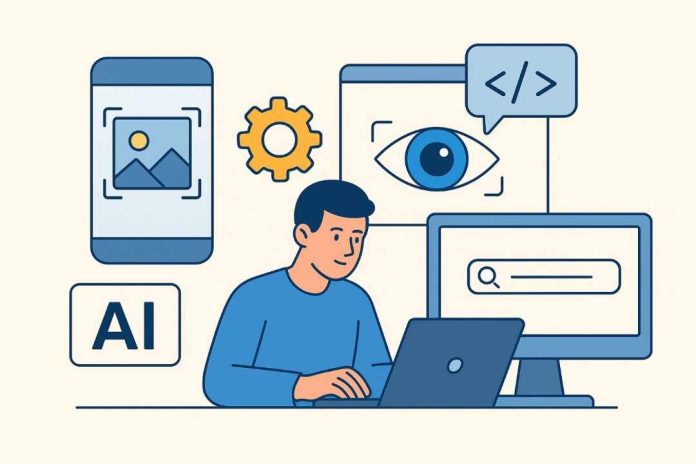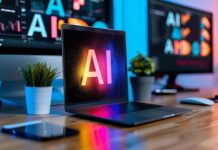Today, developers are changing technology with computer vision libraries. These tools make solving complex visual problems easier, helping programmers build innovative vision systems faster and more accurately. The field is evolving quickly, with Forbes noting that major trends such as AI-driven image recognition and real-time visual analysis are shaping industries worldwide.
The way we do computer vision has changed a lot. Now, professionals can use pre-made algorithms and machine learning. This means developers can work faster and build better systems.
Computer vision libraries are changing many fields, like retail and self-driving cars. They make it easy to add advanced image recognition and processing without having to start from scratch.
Libraries like OpenCV, TensorFlow, and PyTorch are making AI more straightforward to use. They offer solutions that grow with projects. This helps developers of all levels make innovative visual systems.
Choosing the right computer vision library unlocks powerful tools. These tools turn simple images into valuable insights. The future of coding is all about visuals, and these libraries are leading the way.
Table of contents
- Understanding the Role of Computer Vision in Modern Development
- What Makes Computer Vision Libraries Essential for Developers
- Popular Computer Vision Libraries Transforming the Industry
- Building a Framework for Computer Vision: Key Considerations
- How OpenCV Empowers Developers to Create Robust Vision Systems
- TensorFlow and PyTorch: Deep Learning Libraries for Advanced Vision Tasks
- Integrating Multiple Computer Vision Libraries for Enhanced Functionality
- Real-World Applications Built with Computer Vision Frameworks
- Optimizing Performance in Computer Vision Applications
- Common Challenges When Working with Computer Vision Libraries
- Future Trends in Computer Vision Library Development
- Conclusion
Understanding the Role of Computer Vision in Modern Development
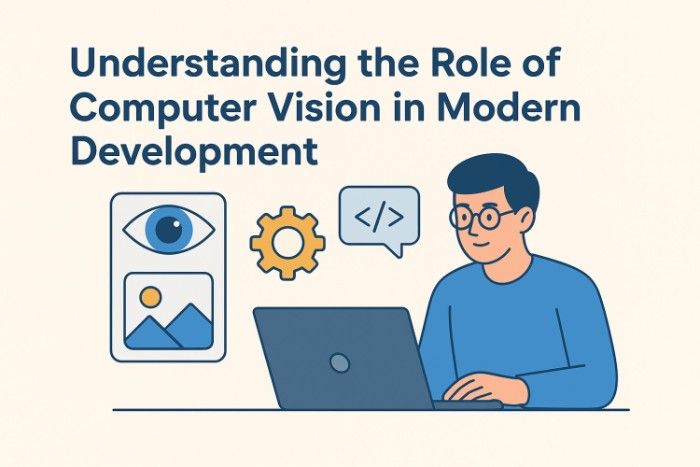
Computer vision has grown from a simple idea to a key tool in today’s tech world. Developers use advanced frameworks to tackle challenging visual problems in many fields. This tech lets machines see and understand images very well.
At its heart, computer vision works like our eyes do, using intelligent algorithms and learning. It’s now part of many apps, from phone cameras to big industrial systems. This tech lets machines spot patterns, find objects, and make wise choices based on what they see.
Fields like healthcare, retail, farming, and security are changing thanks to computer vision. Doctors use it to analyze images for diagnoses. Stores track how customers move around. Farmers check on crops to spot health issues.
Thanks to faster hardware and edge computing, computer vision can do even more. Developers make apps that handle visual data quickly and effectively. This tech is becoming a big part of solving real problems with great accuracy.
Choosing the proper computer vision framework is key for developers. They need to build apps that can understand images like we do.
What Makes Computer Vision Libraries Essential for Developers
Computer vision libraries change the game for software development. They give developers tools that make work easier and faster. These tools handle demanding image tasks so that developers can tackle bigger challenges.
These libraries make complex math easy. Developers can do advanced image analysis with just a little code. This saves time and simplifies things. OpenCV and TensorFlow help make vision apps fast and work on many platforms.
Using these libraries cuts down on coding work. They have everything from image filters to object recognition. They also have great support and updates, keeping developers ahead of the tech curve.
They also make apps run better. With GPU help and support for many platforms, apps are fast and reliable. This means less time spent on coding and fewer bugs.
Choosing the right libraries can make a big difference. It turns a complex project into a smooth one. With the right tools, developers can do more with image processing.
Popular Computer Vision Libraries Transforming the Industry
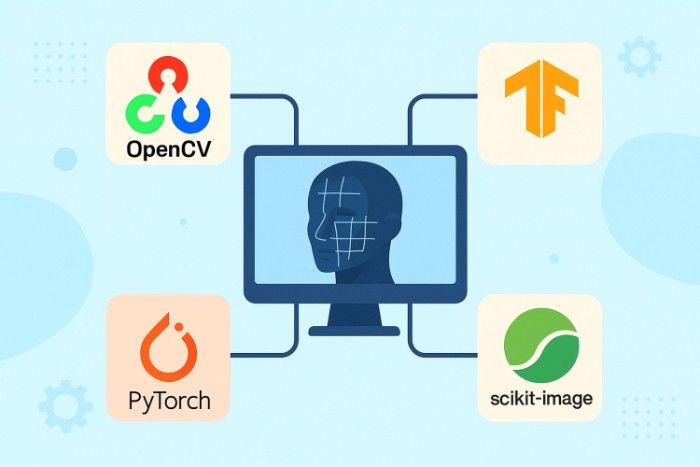
Computer vision libraries are key for developers making innovative visual systems. OpenCV is the top choice for real-time image work and classic vision tasks. It’s perfect for projects needing image and video analysis.
Deep learning has changed computer vision with TensorFlow and PyTorch. TensorFlow is great for large-scale machine learning projects thanks to its deployment tools. PyTorch shines in research with its dynamic graphs and easy neural network building.
Dlib and scikit-image are specialized libraries that add to the mix. Dlib is known for its facial recognition, while scikit-image is for scientific image processing. Each library helps developers solve complex visual problems efficiently.
The growth of computer vision libraries is exciting. They help make self-driving cars and augmented reality possible. These tools let developers create new ways for us to use technology.
Building a Framework for Computer Vision: Key Considerations
Creating a strong framework for computer vision needs careful planning. First, developers must clearly define the vision for their application. This helps set essential parameters, such as how quickly it should work, how accurately it needs to be, and which hardware it can use.
Scalability is key when building computer vision systems. Architects should design frameworks that can grow and change easily. The framework should support a flexible pipeline from image capture to complex processing. This way, it can handle new technologies without needing a full overhaul.
Optimizing performance is about making wise choices about model complexity and algorithms. Developers must find a balance between resource use and high accuracy. Starting with pre-trained models can speed up development without sacrificing quality.
Data management is also vital. Sound strategies for handling data, augmenting it, and tracking model versions are crucial. Choosing the right hardware, such as a CPU or GPU, can make the system more efficient for specific tasks.
By focusing on flexibility, performance, and scalable design, developers can create powerful computer vision frameworks. These frameworks can keep up with new technologies and changing needs.
How OpenCV Empowers Developers to Create Robust Vision Systems
OpenCV is a key player in computer vision. It gives developers a wide range of tools for image processing and advanced visual analysis. Since 2000, it has changed how software engineers work with visual data on different platforms.
The library has over 2,500 optimized algorithms. Developers can use OpenCV for everything from simple image changes to complex machine learning tasks. Its design supports key image and video operations, and object detection, very efficiently.
OpenCV is great because it works on many platforms. It runs well on Windows, Linux, macOS, Android, and iOS. This makes it easy to deploy on various systems. Its C++ base offers fast performance, and Python bindings help speed up development.
OpenCV is used in many real-world projects. It helps create apps for scanning documents, augmented reality, and intelligent surveillance. The large community offers extensive support through tutorials and forums, assisting developers to at all levels.
By combining OpenCV with other libraries, developers can make advanced visual recognition systems. These systems are at the forefront of technological innovation.
TensorFlow and PyTorch: Deep Learning Libraries for Advanced Vision Tasks
Computer vision libraries have changed how developers tackle challenging visual recognition problems. TensorFlow and PyTorch are two top deep learning frameworks. They help build complex neural networks for advanced imaging tasks.
TensorFlow, developed by Google, provides a robust framework for deploying machine learning models across many platforms. It’s great for production, with tools like TensorFlow Lite for mobiles and TensorFlow.js for web apps. Keras, part of TensorFlow, makes it easy to build neural networks for computer vision quickly.
PyTorch, from Facebook, is more for research. It has dynamic computation graphs, making it easier to debug complex networks. This makes it a favorite for research teams in computer vision.
Both libraries are great for tasks like image classification, object detection, and semantic segmentation. Developers can use pre-trained models like ResNet or EfficientNet. This reduces training time and data requirements for specific tasks.
Deciding between TensorFlow and PyTorch depends on your project. TensorFlow is best for production with solid infrastructure. PyTorch is better for research and quick testing in deep learning and neural networks.
Integrating Multiple Computer Vision Libraries for Enhanced Functionality
Developers working on advanced computer vision projects find that a single library can’t solve all problems. They need to mix different libraries to get the best results. This mix helps create a strong framework for computer vision.
Libraries like OpenCV, TensorFlow, and PyTorch have special skills. For example, OpenCV is great for image prep, TensorFlow for deep learning, and Dlib for facial detection. This way, developers can tackle complex tasks with ease.
Integrating libraries well is a big challenge. It’s essential to ensure data formats match, manage memory effectively, and keep things running smoothly. Tools like Docker can help manage these complex setups.
Using a modular approach to library integration has significant benefits. It lets developers easily change parts, use the best tools for each task, and keep things up to date. This way, teams can create advanced vision systems that solve real-world problems.
Real-World Applications Built with Computer Vision Frameworks
Computer vision frameworks have changed many industries. They help machines understand and analyze what they see. For example, self-driving cars use these technologies to move safely in cities.
Shopping has also changed thanks to computer vision. Stores like Amazon Go use it to track what you buy without you needing to check out. In healthcare, new imaging systems help doctors find diseases more accurately.
In manufacturing and farming, computer vision is a big help. It checks products for defects and helps farmers monitor their crops. This makes farming and making things better and more efficient.
Security and public safety have also improved with computer vision. It helps cities manage traffic and identify safety risks. It’s used in many areas, from sports to social media, to make things better.
Optimizing Performance in Computer Vision Applications
When making computer vision apps, improving performance is key. Developers need to use strategies that leverage computer vision libraries effectively. Choosing the right algorithms and methods can significantly speed up apps and use resources better.
Picking the right model is essential for better performance. Models like MobileNet work well for mobile and edge computing. They are small but still accurate in vision tasks.
Using hardware to speed up computer vision is also crucial. CUDA and AI accelerators can speed up app performance. Developers can also use techniques such as quantization and model pruning to improve neural network performance.
Optimizing preprocessing can also make a big difference. Techniques like bright image resizing and efficient color space conversions save time. Batching and parallelizing pipelines help process more frames at once, making apps more efficient.
Tools for profiling help find where apps slow down. By testing different methods, teams can make apps run much faster. This can cut down processing times from hundreds of milliseconds to just a few.
Common Challenges When Working with Computer Vision Libraries
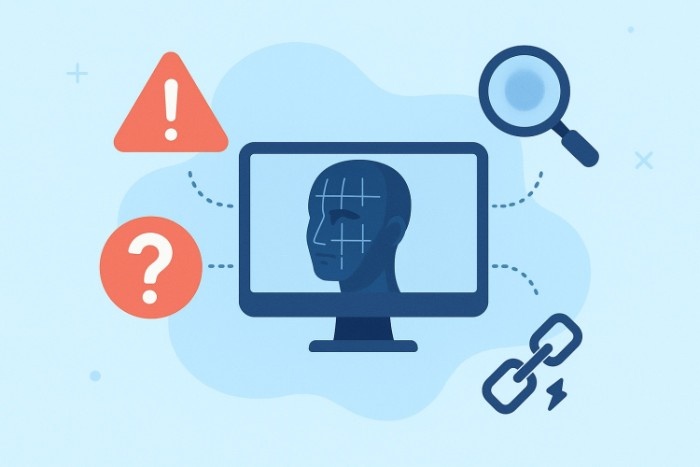
Developers face many technical challenges when using computer vision libraries. These challenges can slow down project work. The framework for computer vision is complex, with many obstacles during setup and use.
Managing dependencies is a big problem. Computer vision libraries need specific setups, making it hard to get started. Developers must handle library versions carefully. This ensures tools like CUDA and cuDNN work well together across different operating systems.
Data quality is another big challenge. Real-world images often differ from the images models are trained on. Issues such as lighting, resolution, and background can affect how well models perform. To solve these problems, developers need strong preprocessing and adaptable models.
Improving performance is always a challenge. Developers must find a balance between how well a model works and how fast it runs. A model that works well in research might not be quick enough for real use.
Hardware limitations also add to the problem. Devices with limited power and memory need special solutions. Developers must select and tune libraries to fit these devices without sacrificing performance.
Knowing these challenges helps developers make better vision systems. Troubleshooting, learning, and working together are essential to solve these problems in computer vision.
Future Trends in Computer Vision Library Development
The world of computer vision is changing fast. New technologies are making AI better. These changes are advancing visual intelligence.
Automated machine learning (AutoML) is leading these changes. It helps developers by picking the best models and settings. Vision Transformers (ViT) and CLIP models are also changing the game in image recognition.
Edge AI is another big trend. It brings advanced vision to devices with limited resources. Now, you can use imaginative vision on phones, IoT devices, and more. Federated learning helps keep data safe by training models locally.
Combining vision, language, and audio is also exciting. This mix is making computer vision libraries more powerful. Synthetic data is helping solve the problem of limited training data.
As AI grows, making systems explainable and standardized is key. New frameworks aim to make computer vision more understandable and reliable. This is especially important in fields like healthcare and finance.
Conclusion
Computer vision libraries have changed how developers work on complex vision systems. Now, building advanced applications is easier than ever. Tools like OpenCV and TensorFlow make image processing and machine learning accessible to all.
Choosing the right library is key to success. Each one has its own strengths that speed up development and improve performance. By mastering these tools, developers can make powerful vision applications in many fields.
The future of computer vision is bright. Libraries will keep getting better, giving developers more tools to tackle tough visual challenges. New technologies and better algorithms will make vision systems even more advanced and user-friendly.
For those new to computer vision, keep learning and experimenting. Try out different frameworks and discover their unique features. Don’t hesitate to mix libraries to generate new ideas. The field of computer vision is ready for your creativity and innovation.



